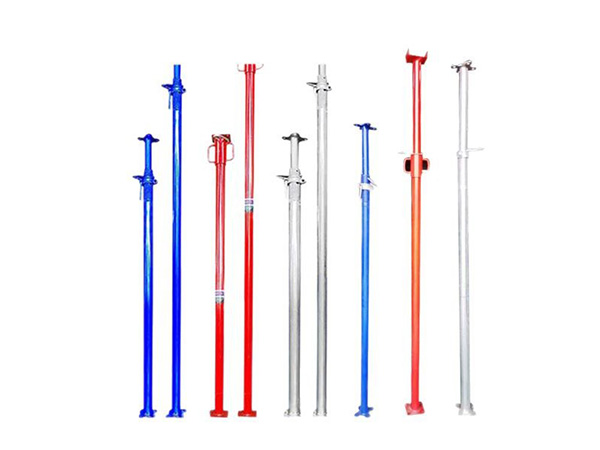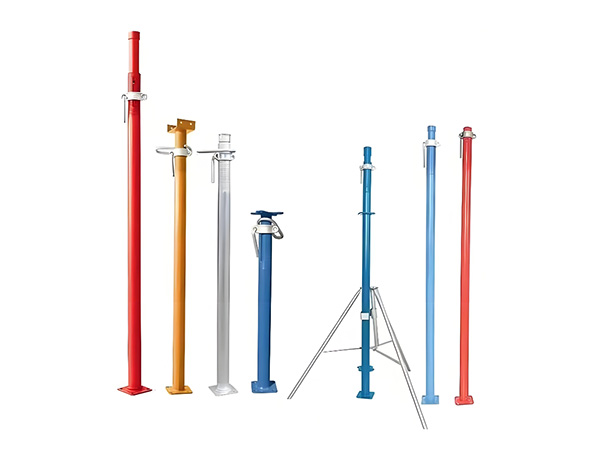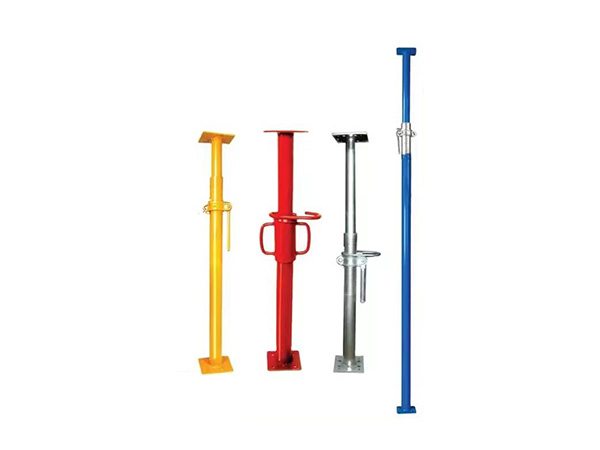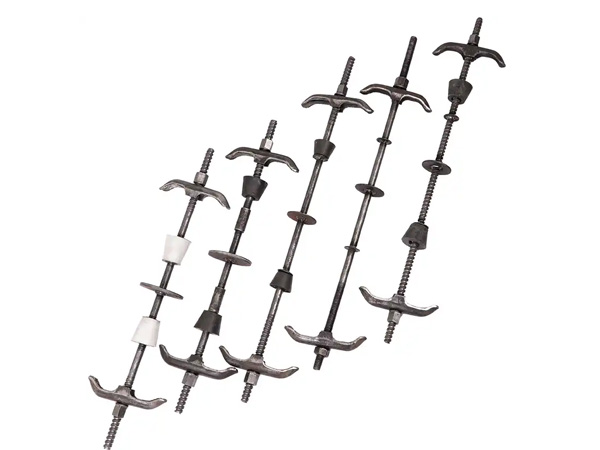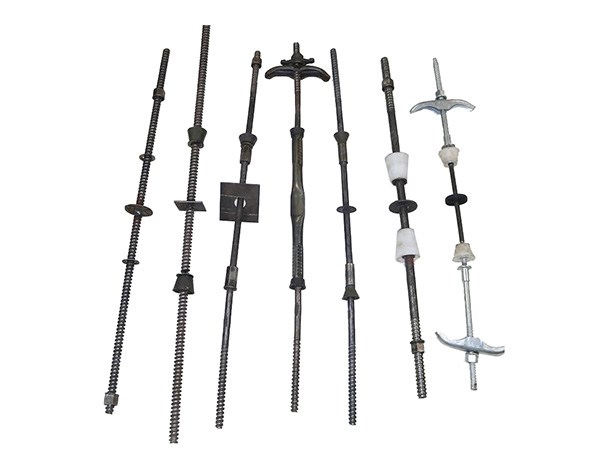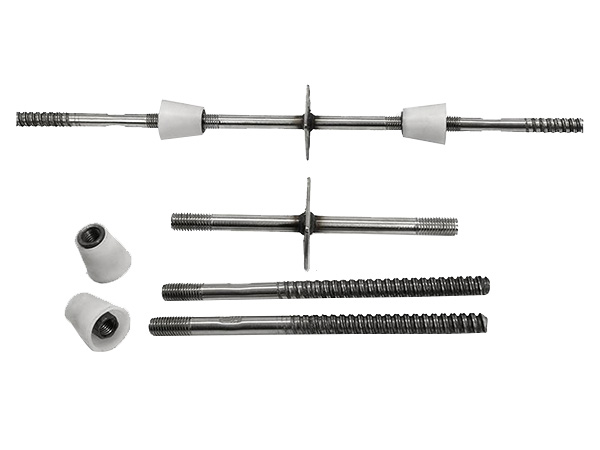- Site Navigation -
NEWS LIST
Specifications and Models of Adjustable Screw Jack
Author:yicheng Date:2025-09-03 15:13:23 Hits:160
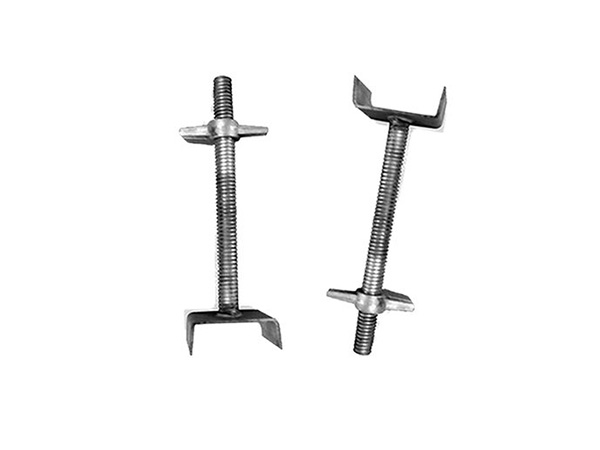
Specifications and Models of Adjustable Screw Jack
Adjustable Screw Jacks(also called"top supports"in scaffolding systems)are designed with diverse specifications to adapt to different construction scenarios,load requirements,and matching scaffolding types.Their classification is mainly based onscrew rod parameters,support plate size,adjustment range,andmaterial grade—the core specifications and corresponding models are detailed as follows:
1.Classification by Screw Rod Specifications(Core Parameter)
The screw rod is the key load-bearing and height-adjusting component of jacking supports,so its diameter and length are the most fundamental specifications.
|Screw Rod Diameter(mm)|Common Screw Rod Length(mm)|Typical Application Scenarios|
|Φ30|300,350,400|Light-load scenarios:Indoor decoration,small-span floor formwork(load≤5kN)|
|Φ32|350,400,450,500|Medium-load scenarios:General residential building floor beams,small bridge cap beams(load 5–8kN)|
|Φ36|400,450,500,600|Heavy-load scenarios:High-rise building core tubes,bridge box girders,large-span roof supports(load 8–12kN)|
|Φ40|500,600,700|Ultra-heavy-load scenarios:Industrial plant large beams,prefabricated component hoisting auxiliary supports(load≥12kN)|
Note:The screw rod length usually refers to the"effective adjustable length"(excluding the part inserted into the scaffolding pole).For special height needs,custom lengths(e.g.,800mm,1000mm)are available.
2.Classification by Support Plate Size
The support plate(also called"bearing plate")is used to connect the screw rod and the formwork/wooden beam,and its size directly affects load distribution.
Small support plate:100mm×100mm(thickness:5–6mm).Suitable for narrow spaces(e.g.,beam side formwork,small-area partition walls)where load is low and installation space is limited.
Standard support plate:120mm×120mm(thickness:6–8mm).The most widely used model,matching most general formwork systems(e.g.,floor slabs,ordinary beams)in residential and commercial buildings.
Large support plate:150mm×150mm(thickness:8–10mm).Used for heavy-load scenarios(e.g.,bridge girders,large-diameter concrete columns)to reduce pressure on the formwork and prevent local deformation.
3.Classification by Adjustment Range
The adjustment range(i.e.,the maximum height difference the jacking support can compensate for)is tailored to construction accuracy requirements.
Standard adjustment type:100–300mm.Meets general formwork elevation fine-tuning needs(e.g.,residential floor pouring,where elevation deviation allowance is±5mm).
Large adjustment type:300–600mm.Suitable for uneven formwork bases or special structures(e.g.,sloped roof formwork,bridge deck with variable thickness)that require greater height compensation.
Micro-adjustment type:50–150mm.Used in high-precision projects(e.g.,prefabricated concrete component installation,industrial floor with strict flatness requirements)to achieve millimetre-level elevation control.
4.Classification by Material and Process
Material grade determines the load-bearing capacity and durability of jacking supports,with two main categories in the market:
Q235 carbon steel jacking supports:The most common type,with yield strength≥235MPa.It is cost-effective and suitable for dry,indoor,or short-term outdoor construction(e.g.,residential building construction).Surface treatment usually includes hot-dip galvanizing(anti-rust for 1–2 years)or electroplating(for indoor use).
Q355 low-alloy steel jacking supports:High-strength type,with yield strength≥355MPa.It has better anti-deformation and anti-fatigue performance,suitable for long-term outdoor projects(e.g.,bridge construction,tunnel secondary lining)or projects in harsh environments(e.g.,coastal areas with high salinity).Surface treatment mostly uses hot-dip galvanizing with increased zinc layer thickness(anti-rust for 3–5 years).
Key Notes on Model Selection
-Match with scaffolding poles:For example,aΦ48mm standard scaffolding pole should be paired with a jacking support whose insertion tube inner diameter is 50–51mm(to ensure tight connection).
-Refer to load calculations:Never use undersized models(e.g.,Φ30 for heavy bridge supports)to avoid structural collapse.
-Comply with standards:All models should meet the requirements of GB/T 37267-2018Technical Specification for Scaffolding Components for Constructionto ensure safety and reliability.







